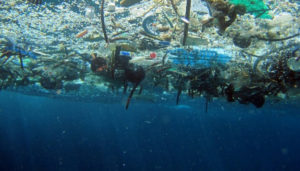
Plastic pollution in an ocean gyre. Some floats on the surface, but more floats beneath the surface.
I am part of a team that is facilitating the “Nevada Engineering Fellows Program” for 5th grade teachers in Nevada. The funding for the program came from the Nevada Governor’s Office of Science Innovation & Technology. A major goal of the program is for teachers to learn how to design and build NGSS aligned STEM units with an emphasis on engineering, and to be able to evaluate the quality of units they find elsewhere.
The plastic pollution problem in our oceans has become catastrophic. Plastic never goes away it, just breaks down into smaller and smaller pieces (micro plastics) that are ingested by sea life (and then us).
We started by having the participating teachers experience a model unit we designed on removing plastic from the ocean. They spent all day on a Saturday in October learning the unit. Then we provided all the materials required for the teachers to take the unit back to their classrooms to do with their students. We visited every classroom to observe how things were going and to consult. The phenomena that kicked off the unit is the video below (there are many others to choose from BTW if you search the web). Teachers and students reported to us during our classroom visits how compelling watching and re-watching the video and making/sharing observations of what they saw and heard … really motivated them to want to take on this engineering challenge.
Here is a link to the unit plan. Kris Carroll did most of the heavy lifting on the unit design with plenty of help from Stacy Cohen, Tracey Gaffney and myself.
The graphic organizers referenced in the unit plan and some support materials:
Engineering INB Phase A_3_5_ElementarySchool
Engineering INB Phase B_3_5_ElementarySchool
Engineering INB Phase C_3_5_ElementarySchool
Here is the materials list for making a plastic gyre for each group (although we substituted somewhat and some teachers added to it): Materials for gyre
Here is a link to a Flickr set from teacher trainings in- Southern Nevada, Northern Nevada
Here are photos from 10 classrooms in Northern Nevada.
BELOW: These are the plastic plant trays we provided:
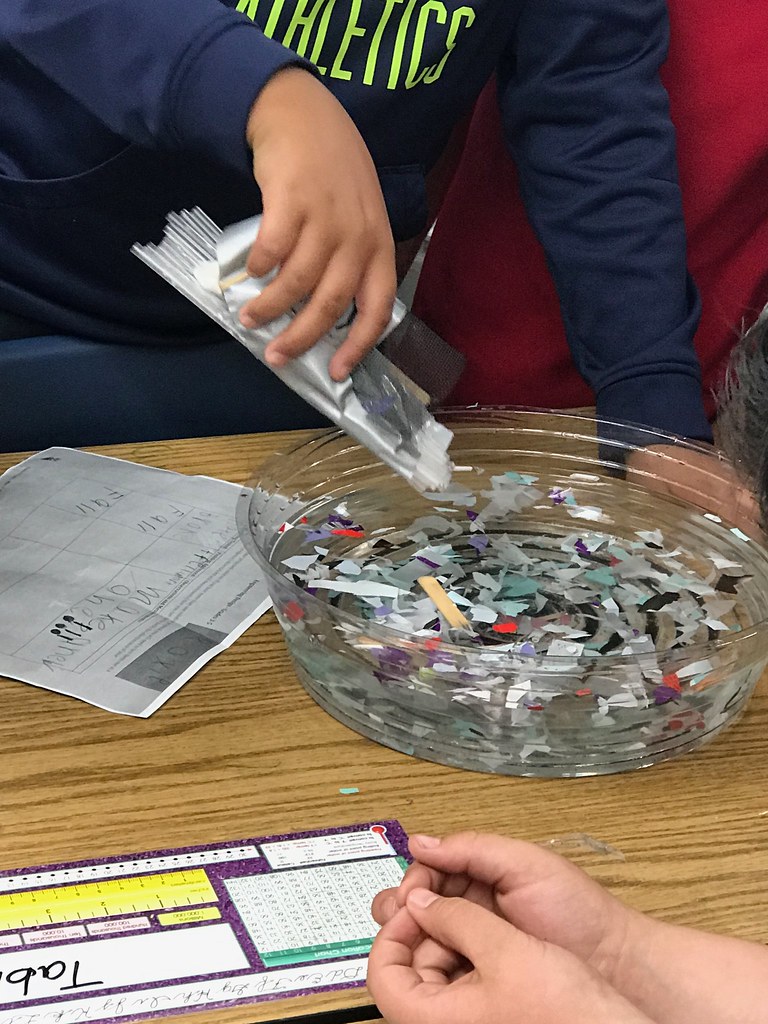
But some teachers substituted with larger containers: 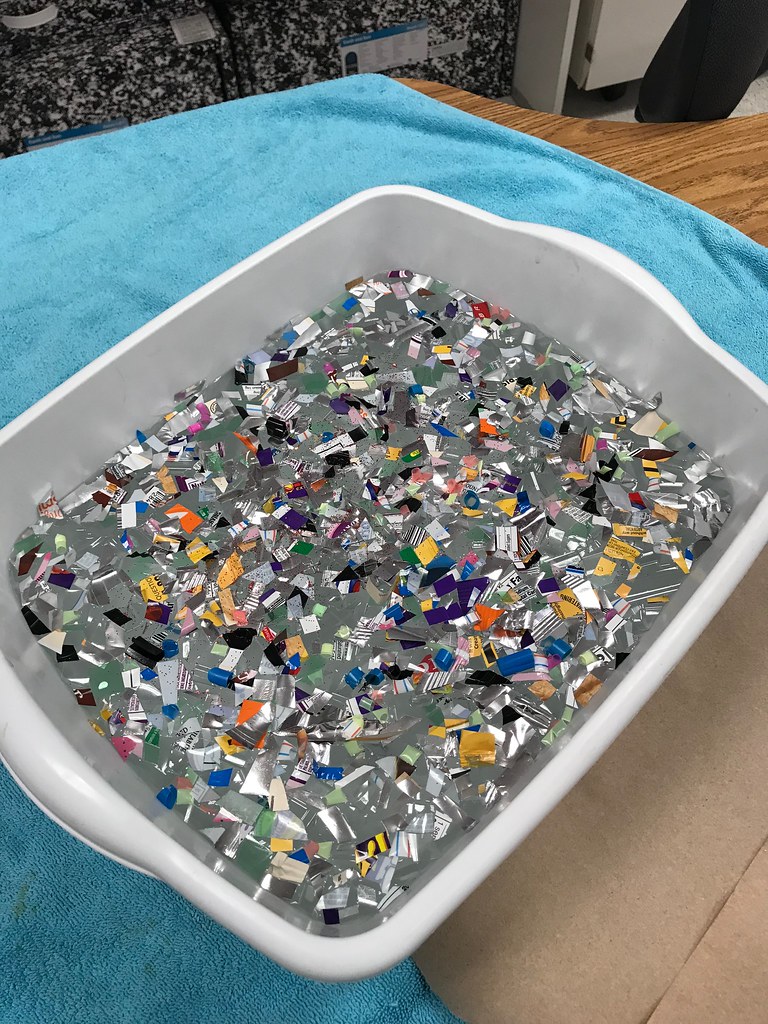
The trays of water were somewhat problematic in that they were small (so they could be utilized more easily in moving to and from student tables) and students struggled with scale. One big suggestion based on our experience, after the initial trial of their design, have a complete debrief that includes a discussion of size of both the plastic debris (which should be cut much smaller than you see here) but also that the devices students build need to be smaller than you see here as well. In addition discuss how the trays represent a tiny, tiny part of the ocean (students really struggled with understanding the size of oceans). Also we suggest after the initial experience have students brainstorm materials that they believe should be included in the materials they have available to build their plastic removal/gathering device – then gather them from the school and have students find things at home to bring in to provide themselves more options.
We had an all day class for the teachers after most of them had completed most of the unit. They all reported that they and their students were highly motivated by the experience (and we noted the same during our classroom visits). Next teachers are designing their own units to match up with their curriculum using this experience as a model. I really feel I’m sharing only a sliver of the potential for this lesson and how it went here, so feel free to ask questions in the comments.
Learning is messy!

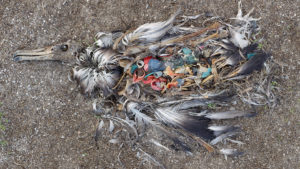
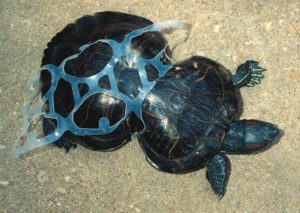
What a cool way to get kids involved in a hands-on way with a problem that affects more than just their small part of the world! I would love to take this concept and use it at lower grade levels; I bet Kindergartners would have some amazing solutions to this problem!
Please share if you take this on – I’d love to see what your students come up with!